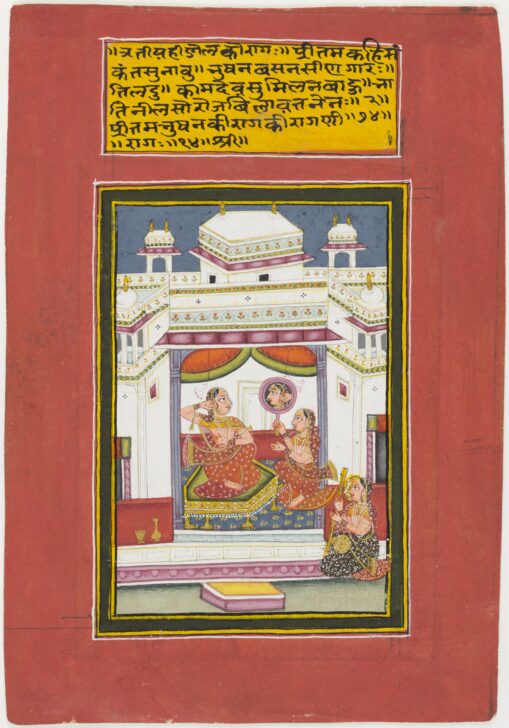Bilaval Ragini
Indian

Description
Bilaval ragini, the personification of a musical mode that evokes the mood of a woman longing for her lover, is shown adorning herself with jewelry while she studies the effect in a mirror held by her handmaiden. A second attendant plays music on the veranda. The setting is a charming marble pavilion, with projecting porches topped by cupolas and a small rooftop chamber.
The name Bilaval (alternately spelled Vilaval) derives from the south Indian Valava tribe; presumably the music that inspired this poetry and image originated there.
Exhibited in "Divine Encounters, Earthly Pleasures: Twenty Centuries of Indian Art," 12/12/03-2/22/04.
Subject Matter:
Bilaval ragini, the personification of a musical mode that evokes the mood of a woman longing for her lover, is part of the Ragamala tradition of paintings, which are miniature paintings based on musical modes.
Physical Description:
This miniature painting is placed on a red background with text written above it. In the center, a woman is adorning herself while looking at a mirror that is held by a female attendant. They are seated inside a marble pavilion, with projecting porches topped by cupolas and a small rooftop chamber. Another female attendent plays a string instrument to the side in the foreground.
Usage Rights:
If you are interested in using an image for a publication, please visit https://umma.umich.edu/request-image/ for more information and to fill out the online Image Rights and Reproductions Request Form.